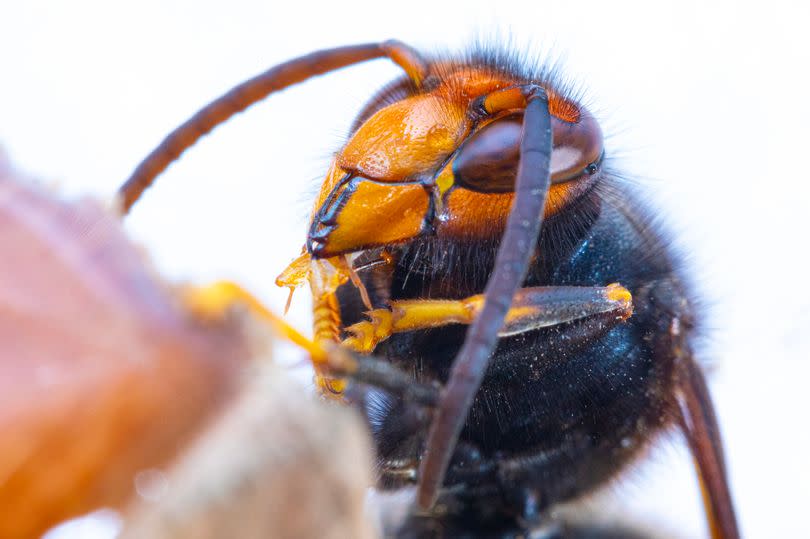Pet expert on what to do if your dog is stung by an Asian hornet

The UK's chief plant health officer has urged the public to be vigilant of Asian hornets after nature groups warn of a potential surge in damaging invasive non-native species. The non-native species of wasps threaten honey bees and important pollinators and run a risk of increasing in numbers during the peak of summer.
A record number of sightings of the insect were established last year. As the weather gets warmer, and we spend more time outdoors with our furry friends, it’s important to keep them safe from anything which could cause harm, including the Asian hornet.
The team of experts at tails.com have revealed their top tips on what to do if you find your dog has been stung by a wasp or bee.
What are the signs my dog has been stung by a hornet?
Obviously, we want our pets to stay safe from harm, so it's important to remain vigilant and on the lookout for wasps when out walking this summer. If you are worried they might have been stung, there are a few tell-tale signs to look out for, including:
Whining
Trying to bite at the affected area
Pawing at their face, if they were stung inside their mouth
Holding up their paw if the sting occurred in that area
Swelling around where they were stung
What should you do if your dog has been stung?
Remain calm
First and foremost, if you think that your dog might have been stung, you need to remain calm. Though it can be worrying when it happens, your dog may pick up on your sense of panic, which may cause them to become even more agitated than they already are. Not only that, but if your dog is allergic to wasp stings then you may need to act fast, and you can only do this with a clear head, so it's important to stay as relaxed as possible.
Take out the sting
Once you identify where your furry friend has been stung, you need to remove it. To do this, you’ll want to grab a credit card to try and scrape away the sting from where the venom sack is. Make sure you never try to pull or squeeze the sting from your pooch. If you do, you may run the risk of releasing more venom from the sting into your dog's body which could cause further irritation to the affected area.
Try and ease the swelling
When you’ve removed the sting, the next thing you want to do is to try and ease the pain and swelling in the affected area. To do this, grab an ice pack and wrap it in a clean towel and hold against where it is swelling.
You can also neutralise the venom in the wound, by mixing together a paste of water and baking soda and applying it where your canine has been stung for around 15 minutes. To prevent your curious pup from licking at the mixture, remember to cover it with a bandage.
Keep a close eye on your dog
Finally, it's important that you keep a close eye on your dog when they have been stung by a wasp, so you can look for any signs of an allergic reaction including difficulty breathing, vomiting or weakness.
When do I need to go to the vet?
Most of the time, when a dog is stung, the wound can be treated with home remedies and there is no need to go to a vet. However, that being said, if your dog is stung in the mouth, throat or tongue area then it is always best to seek professional advice. This is because stings of this manner can be particularly dangerous to your fluffy friend, as they can block their airways. You should also contact your vet if your dog has been stung multiple times or if there are any signs of an allergic reaction.
Can I give my dog an antihistamine?
While there is much debate over whether it is okay to give your dog an antihistamine, with some sources on the internet stating that it is fine for our dogs to consume human tablets, before doing so, always check with your vet first. This is because some antihistamines that are fine for us humans can contain ingredients that are toxic to dogs, and cause them to be extremely unwell. Seeking advice from your vet will also mean that they can tell you which brands are safe, as well as the correct dosage for your dog's size.

 Yahoo News
Yahoo News 
